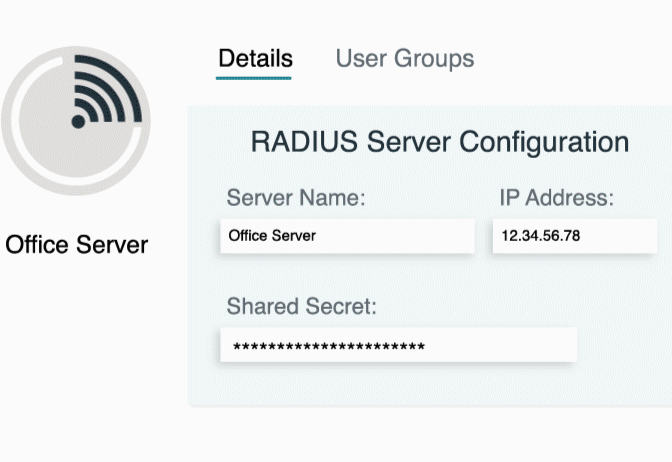Updated on May 21, 2025
Double-tagging attacks are a type of VLAN hopping attack that take advantage of weaknesses in VLAN configurations to break through network isolation. This post explains how double-tagging attacks work, the risks they present, and practical steps you can take to protect your network.
What Is VLAN Tagging?
Before diving into double-tagging attacks, it’s important to understand VLAN tagging.
VLAN tagging uses the IEEE 802.1Q standard to assign Ethernet frames to specific VLANs. This works by adding a VLAN ID (VID) to the frame’s header, which helps network switches send traffic to the correct VLAN. It ensures that devices within the same VLAN can communicate, while cross-VLAN communication requires specific rules to be set.
For example: If VLAN 10 is designated for the finance department and VLAN 20 for marketing, VLAN tagging ensures that traffic stays within the respective VLAN unless explicitly permitted.
While VLAN tagging is designed to prevent unauthorized mingling of traffic, vulnerabilities in switch configurations can be exploited—leading to a double-tagging VLAN vulnerability.
What Is a Double-Tagging Attack?
A double-tagging attack is a VLAN hopping technique that tricks switches into bypassing VLAN isolation. Here’s how it works:
- The attacker creates an Ethernet frame with two VLAN tags: an outer tag (their own VLAN) and an inner tag (the target VLAN).
- When the frame reaches the first switch (configured as a trunk port), the switch removes the outer tag and forwards the frame.
- The frame, now left with only the inner tag, is sent to the next switch, which delivers it to the target VLAN.
The result is that the attacker gets unauthorized access to a VLAN they shouldn’t be able to reach.
Why It Works
This attack exploits two factors:
- Native VLAN Configurations: Many switches are preconfigured to accept and forward untagged traffic on the native VLAN.
- Improper Trunk Port Configurations: Allowing untagged or unmanaged traffic on trunk ports opens the door to double-tagging attacks.
When these vulnerabilities exist, attackers can break through network segmentation, compromising the isolation that is essential for a secure VLAN setup.
Key Components and Vulnerabilities
Native VLANs
- What They Are: The VLAN that carries untagged traffic on a trunk port. By default, switches treat native VLAN traffic differently and don’t apply additional tagging rules.
- Risk: If the native VLAN is improperly configured, it provides a conduit for double-tagging exploits.
Trunk Ports
- What They Are: A trunk port is configured to handle traffic for multiple VLANs, tagged with their respective VLAN IDs.
- Risk: Allowing untagged traffic on trunk ports can enable attackers to inject double-tagged frames.
Switch Misconfigurations
Common misconfigurations that make networks vulnerable include:
- Failing to specify a unique, unused VLAN for the native VLAN.
- Not restricting the VLANs that are allowed on trunk ports.
- Overlooking regular audits and updates of VLAN tagging policies.
Addressing these vulnerabilities is essential for mitigating the risk of double-tagging attacks.
Impacts of a Double-Tagging Attack
A successful double-tagging attack can have severe consequences for enterprise networks, including:
- Unauthorized VLAN Access: Attackers can bypass network segmentation policies and access restricted VLANs.
- Data Interception and Theft: By infiltrating VLANs with sensitive information, attackers can steal or manipulate data.
- Increased Attack Surface: Double-tagging can lead to further attacks like man-in-the-middle, denial-of-service (DoS), or the installation of malicious software.
These risks become even greater in large, segmented networks with many VLANs. Following strict security practices is vital to keep these environments secure.
Mitigation Strategies
Network administrators can reduce the risk of double-tagging attacks by implementing the following strategies:
- Reconfigure the Native VLAN: Assign the native VLAN to an unused VLAN ID. This isolates untagged traffic and mitigates the effectiveness of double-tagging attempts.
- Enforce VLAN Tagging on All Trunk Ports: Configure trunk ports to expect and handle tagged traffic exclusively. Drop any untagged or improperly tagged traffic.
- Restrict Trunking: Limit trunk port configurations to only the ports that require them. Explicitly define which VLANs can use each trunk port.
- Monitor VLAN Traffic: Use network monitoring tools to detect and log unusual VLAN tagging behavior.
- Regular Security Audits: Review and update VLAN configurations periodically to ensure they adhere to the latest security standards.
If implemented correctly, these measures can greatly reduce the risks of double-tagging attacks.
Risks and Scenarios
Double-tagging attacks are most likely to occur in environments where VLAN configurations aren’t tightly controlled, such as:
- Corporate Networks with Outdated Switch Configurations: An enterprise leaving trunk ports unmonitored and native VLANs at default settings is a prime target.
- Data Centers Running Multi-Tenant Environments: Improper segregation of tenant VLANs can allow one tenant to attack another’s VLAN.
Example Attack
An attacker on VLAN 10 could use a double-tagged packet to reach VLAN 20. The first switch forwards the frame, stripping away the outer tag, while the next switch reads the inner tag and sends the packet to VLAN 20. This gives the attacker access to sensitive VLAN 20 data, like user credentials or financial information.
This example highlights the importance of staying vigilant against such vulnerabilities.
Tools for Detection and Prevention
Security professionals can leverage the following tools and commands for securing VLANs against double-tagging attacks:
Switch Configuration Commands
On Cisco switches, for example:
- `switchport trunk native vlan <VLAN_ID>` modifies the default native VLAN.
- `switchport trunk allowed vlan <VLAN IDs>` restricts VLAN access to specified IDs.
Periodic Configuration Backups and Reviews
Use automation and auditing solutions to ensure trunk port configurations and VLAN policies are consistently upheld.
These tools, combined with proactive configuration management, form a robust defense against VLAN hopping threats.
Glossary of Terms
- Double-Tagging Attack: A VLAN hopping exploit that uses improperly tagged Ethernet frames to gain unauthorized VLAN access.
- VLAN (Virtual Local Area Network): A network segmentation method for isolating traffic within specific groups.
- 802.1Q: An IEEE standard for VLAN tagging in Ethernet frames.
- Native VLAN: The VLAN assigned to handle untagged traffic on a trunk port.
- Trunk Port: A switch port configured to carry tagged traffic for multiple VLANs.
- VLAN Hopping: A network attack involving bypassing VLAN isolation mechanisms.
- Intrusion Detection System (IDS): A tool that monitors network traffic for potential malicious activity.






